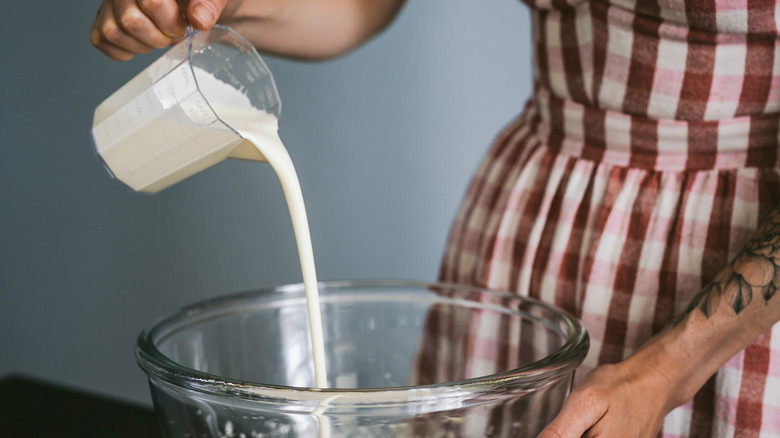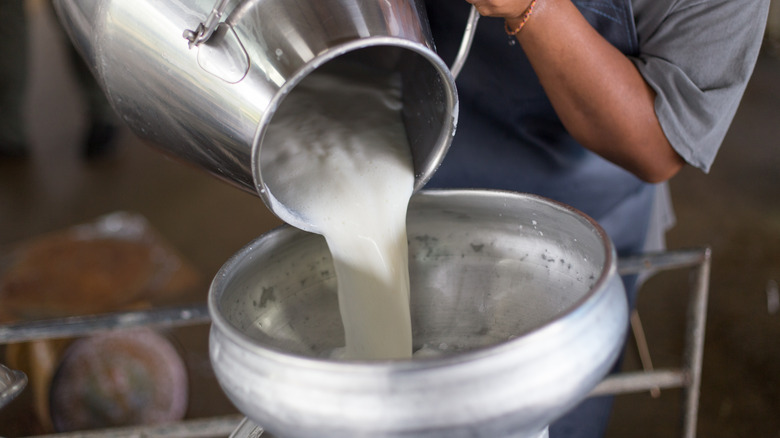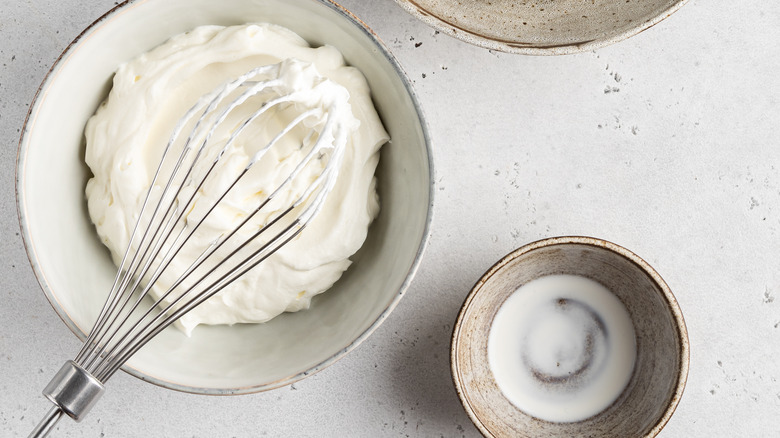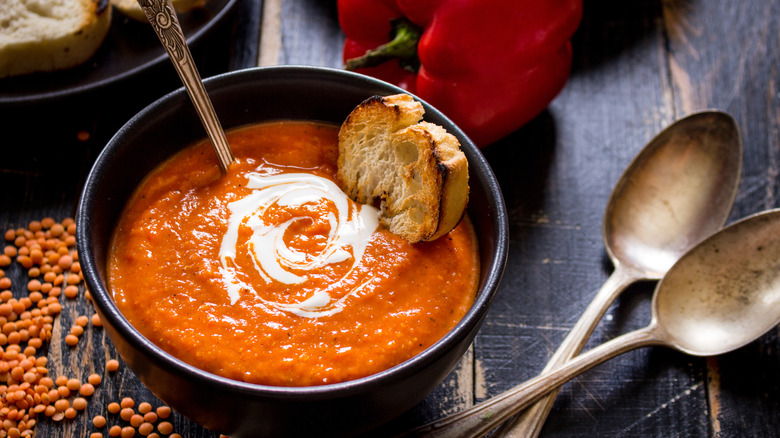What Is Heavy Cream Really And Is It More Nutritious Than Whole Milk?
You've been to the grocery, you've seen the dairy aisle. The rows of open-air display coolers stocked with product after product: whole milk, skim milk, half and half, whipping cream, the list goes on and on. Then there's the heavy cream.
While many items in the cooler have pretty straightforward uses, heavy cream is somewhat of an enigma. It's obviously useful or it wouldn't be there, but what is it actually used for? And how does it compare to the other dairy products on the shelf? You wouldn't be the first to ask these questions, but luckily the answer isn't too complicated at all.
Heavy cream, like other dairy products, is made from cow's milk. The real differentiator between heavy cream and other liquid dairy options is the fat content. As the name may imply, heavy cream is heavy and thick, meaning it has a very high fat content. With anywhere from 36%-40% fat, it has one of the highest fat contents of all dairy products, according to Healthline.
Because of this, heavy cream is thicker and creamier than other dairy options.
How is heavy cream made and is it nutritious?
When fresh milk is left to sit, the fattiest part rises to the top. Heavy cream is made by scrapping or separating this fatty layer. While this may be heavy cream in its most true form, as Real Simple reports, commercial heavy cream may also contain added vitamins, stabilizers, or thickeners.
Heavy cream, by definition, has a lot more fat than milk. But, as The Food Network reports, there can be a place for heavy cream as part of a balanced diet. Heavy cream contains nutrients like calcium, vitamin A, and riboflavin.
However, most of the fat in heavy cream is saturated, which has been linked to various health concerns in the past. Whole milk, on the other hand, only has about 3.5% fat, making it a better option to consume more of. This doesn't mean you should never eat or cook with heavy cream, just that it's often better for your diet to consume it in smaller portions.
Heavy cream vs. heavy whipping cream
Heavy cream and heavy whipping cream are essentially the same things, they both contain at least 36% fat, per Healthline. Whipping cream, on the other hand, is different. Containing 30%-35%, whipping cream is a lighter cream option, though you'll likely still be able to get those fluffy white peaks.
Heavy cream and heavy whipping cream will hold its shape significantly longer than whipping cream. Because of this, Cooking Light explains it's a better option for "piping, pastry fillings, and toppings." Heavy cream is also a better thickening agent for sauces and soups.
Whipping cream is will whip into a lighter and more pillowing texture. It's best for those looking to choose a less fatty cream, or simply those who like the texture it produces. Be warned though, whipping cream is more likely to lose its shape faster than its heavy counterpart.
For this reason, Cooking Light recommends heavy cream and heavy whipping cream as the more versatile option and a better choice to have on hand for whatever purpose you may need it for.
How is heavy cream used and where can I buy it?
Heavy cream has a variety of uses, and is often an ingredient in multiple different types of cuisines. The most straightforward use: whipped cream. However, heavy cream is also used in pasta sauces, soups, creamy dressings, and cream-based desserts like ice cream, crème brûlée, and ganache, according to The Kitchn.
If you're looking for some ways to use heavy cream think Alfredo sauce, cream-based soups like cream of mushroom or cream of chicken soup, or decadent mouse. Heavy cream will add thickness, richness, and creaminess to dishes. It's a delicious option to cook with if these are qualities you look for in your meals.
Heavy cream is a very common ingredient so it shouldn't take much effort to find; nearly every grocery store carries heavy cream. You'll find it in the refrigerators in the dairy aisle usually next to other milk and cream products.
While it should be labeled fairly clearly, if you have any reservations about which cream to buy you can always check the fat content. Remember: heavy cream has at least 36% fat. If you're looking for an extra-rich option, you may be able to find a heavy cream with up to 40% fat by reading the labels.



